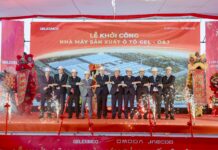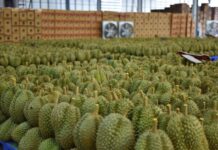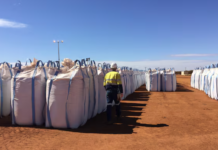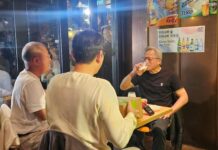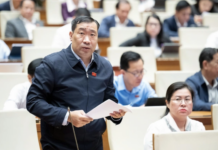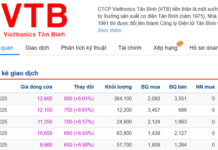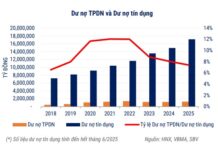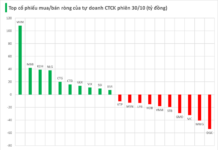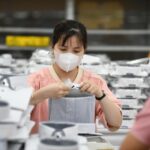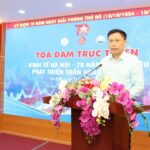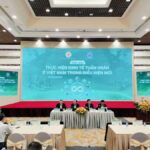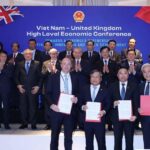The “Circular Economy in Cocoa Production” project, funded by the European Union (EU) and implemented by HELVETAS in coordination with the Community Development Center (CDC), has supported Trong Duc Cocoa Company in transforming discarded cocoa fruit shells into biochar – a high-value product that contributes to environmental protection and resource optimization.
This novel approach not only addresses waste management issues in agricultural processing but also promotes the implementation of circular economy practices in the cocoa industry…
CONVERTING FRUIT WASTE INTO FUEL
Trong Duc Cocoa Company is currently the second-largest cocoa processor in Vietnam and a pioneer in producing biochar from discarded cocoa fruit shells.
To ensure proper fermentation and consistent quality of wet cocoa beans, the company is the only one in Vietnam that directly purchases fresh cocoa fruits from farmers. As a result, the company generates approximately 5,000 tons of fresh cocoa fruit shells annually during the preprocessing stage. This amount of waste, if not properly managed, can have a significant environmental impact.

The new technology for processing cocoa fruit shells into biochar has been implemented at Trong Duc Cocoa Company. Here, the production of biochar starts with shredding and sun-drying the cocoa fruit shells, which are then fed into a Torch Updraft Gasifier furnace for gasification burning.
During gasification, the cocoa fruit shells are transformed into high-quality biochar at temperatures reaching 770°C. A torch flame is formed during combustion, producing no smoke and achieving high gasification efficiency, with complete fuel combustion. The clean gas generated is utilized to provide heat for the factory, significantly improving the cocoa bean drying process and supporting other heat applications within the facility.
“The biochar samples produced were independently tested by Quatest 3 for four basic indicators: fixed carbon, ash content, volatiles, and hydrogen level, and all samples met the biochar quality standards.”
Mr. Dang Tuong Khanh, General Director of Trong Duc Cocoa Company.
The biochar furnace system is designed as a synchronized unit integrated with the bean drying system in the factory through heat transfer devices. The clean heat generated during the shell burning process is monitored and adjusted according to the technical requirements of each drying stage, ensuring no impact on the quality and flavor of the final cocoa beans.

Representing the initiative’s testing entity, Mr. Dang Tuong Khanh, General Director of Trong Duc Cocoa Company, affirmed: “The fruit shells that remain after extracting the beans often become waste with no value and a negative environmental impact. With this initiative, this waste stream becomes a source of fuel, generating clean heat and high-value biochar. We strongly believe that this beneficial initiative can and should be more widely adopted.”
THE NEW TECHNOLOGY OFFERS MULTIPLE ADVANTAGES
“We are honored that the project selected our company as the first consultant to implement this creative idea. This solution is applicable to both businesses and farming households,” shared Mr. Duong Van Truc, a technical expert from Sawaen, a water and environment company.
According to Mr. Truc, this technology presents several advantages.
Firstly, it optimizes waste management: This technology transforms cocoa fruit shells from waste requiring disposal into a valuable product. This method not only reduces waste volume but also converts it into biochar, thereby minimizing negative environmental impacts.
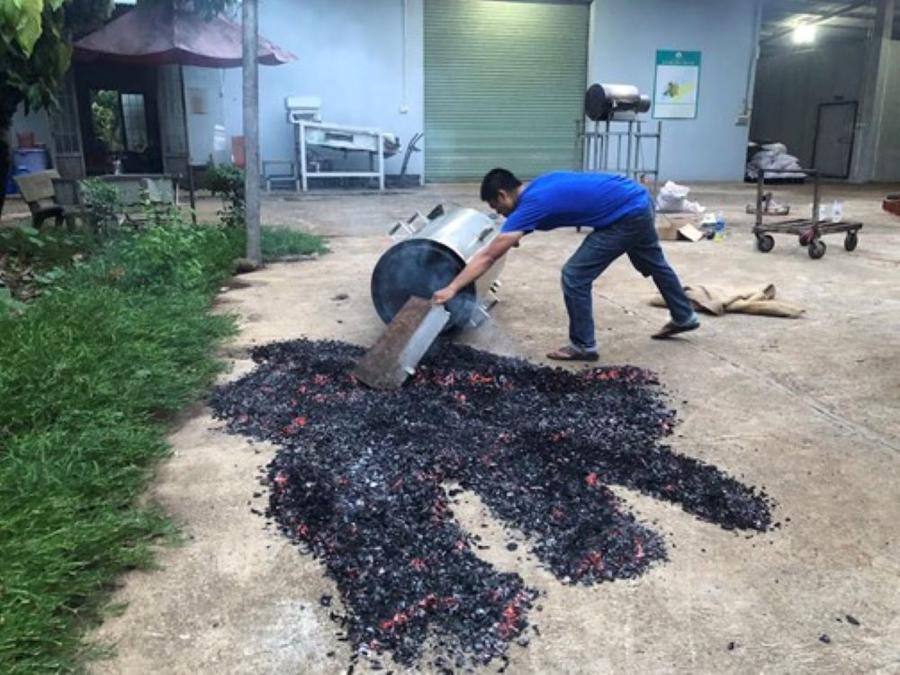
Secondly, it saves costs and enhances efficiency: The biochar production process provides clean heat for drying cocoa beans. The new drying system reduces the drying time during the rainy season from 15 days to 7 days, almost equal to the drying time in the dry season, resulting in significant energy savings and a reduced risk of mold, thus improving product quality.
Thirdly, it improves soil quality and increases crop yields: Using biochar helps enhance soil structure, water retention, and nutrient content, contributing to higher crop yields. This is crucial for establishing a sustainable agricultural system.
Fourthly, it protects the environment: Biochar production contributes to long-term carbon sequestration, reducing atmospheric CO2 levels and mitigating climate change. Additionally, biochar can absorb water pollutants, improving water quality.
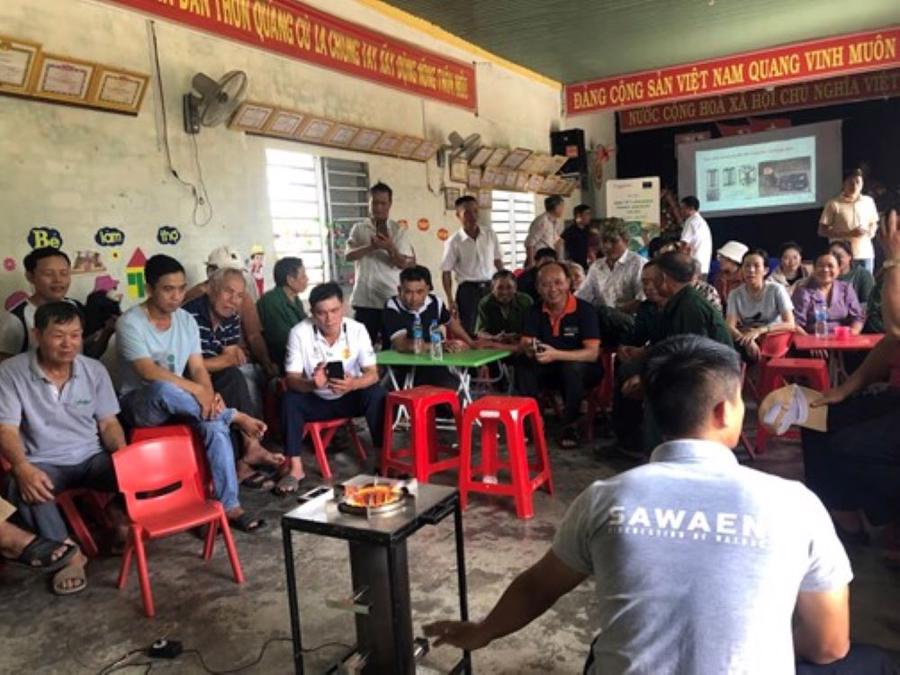
Mr. Nguyen Dinh Tuan, Project Manager of the Circular Economy in Cocoa Production project at Helvetas Vietnam, highly appreciates this initiative for addressing waste management issues and creating new development opportunities for the cocoa industry. Revenue from biochar sales can offset waste management costs and generate additional income. This will encourage other cocoa companies to invest in circular economy technologies.
“The success of the biochar production initiative at Trong Duc Cocoa Company is a very practical testament to applying circular economy principles in this industry. The positive outcomes demonstrate that converting waste into resources is not only feasible but also yields significant benefits. Scaling up biochar production will contribute to sustainable agricultural development, enhanced environmental protection, and optimized production efficiency,” emphasized Mr. Tuan.
Nowadays, the circular economy is not just a trend but an essential factor in building a sustainable future for the cocoa industry and the entire agricultural food sector. Businesses and investors adopting this model are driven not only by economic benefits but also by their commitment to environmental protection and contribution to the common good of the community.
The Green Revolution: A New Opportunity for the Textile Industry in the Circular Economy
The domestic textile industry faces challenges in adhering to green production and circular economy regulations. However, there lies a significant opportunity for these businesses to tap into trillion-dollar markets by ensuring product origin traceability and environmental sustainability.
The Green City: Hanoi’s 70-Year Journey Towards a Circular and Sustainable Economic Future
The income scale of Hanoi has witnessed a remarkable surge, and its economic structure is evolving towards a modern, sustainable, greener, and cleaner model. However, amidst pressing environmental challenges, the focus must now shift towards fostering a green and circular economy in the coming years.
The Green Revolution: Vietnam’s Journey Towards a Circular Economy
The circular economy is pivotal for Vietnam to achieve green growth and a green economy, thus meeting its sustainable development goals. With a focus on reducing waste, promoting sustainability, and encouraging the reuse and recycling of resources, the circular economy offers a robust framework for Vietnam to foster innovation, enhance resource efficiency, and mitigate environmental impacts. By embracing this model, Vietnam can chart a course towards a more resilient and environmentally friendly future, ensuring long-term economic prosperity while preserving the planet for generations to come.
Sustainable Con Dao: Embracing a Circular Economy for Long-Term Prosperity
To foster sustainable development in Con Dao, aviation and high-speed ferry businesses have actively risen to the occasion with a plethora of supportive initiatives. These initiatives are designed to turn the vision of socioeconomic progress, hand in hand with environmental conservation, into a tangible reality.

